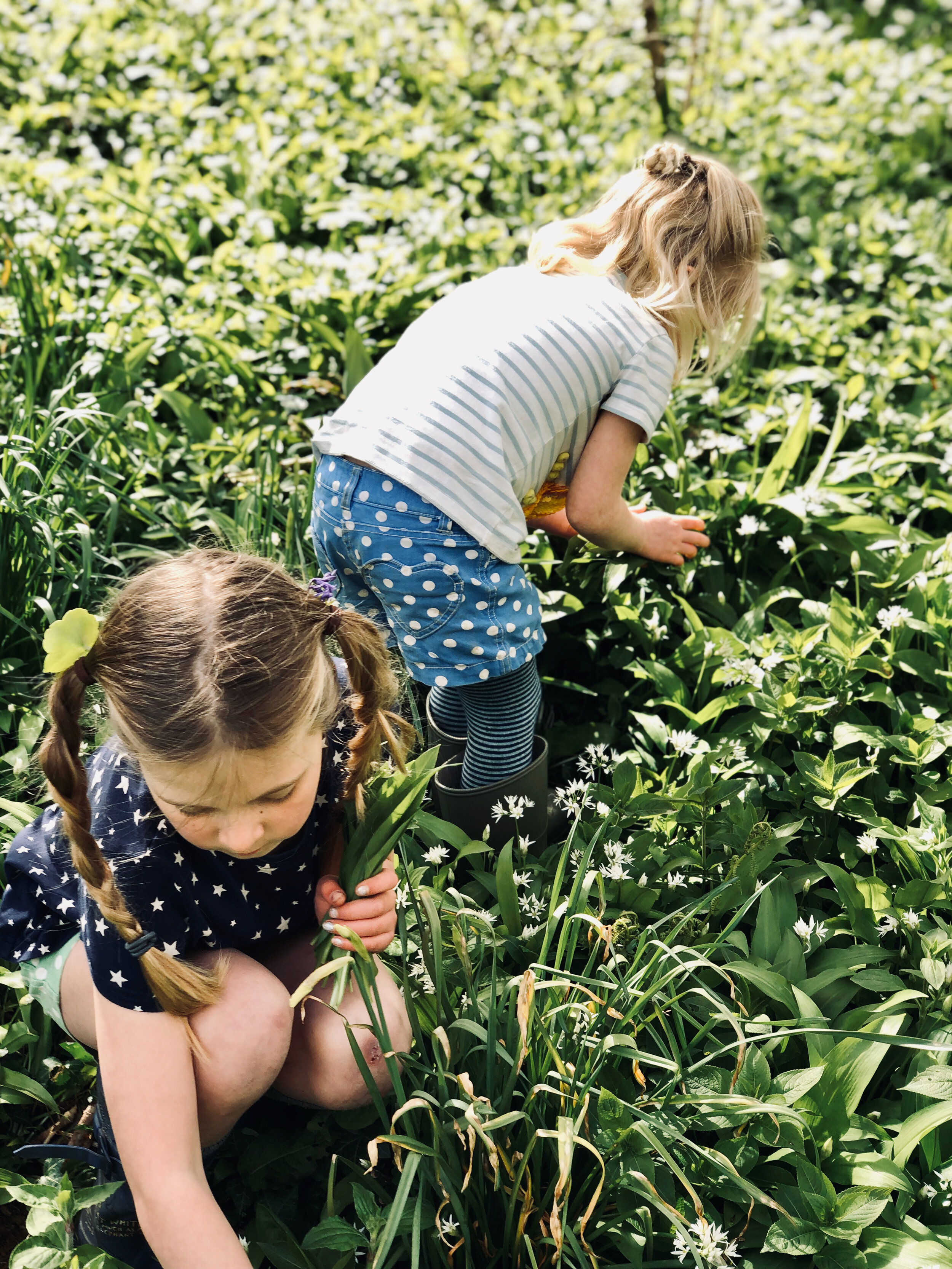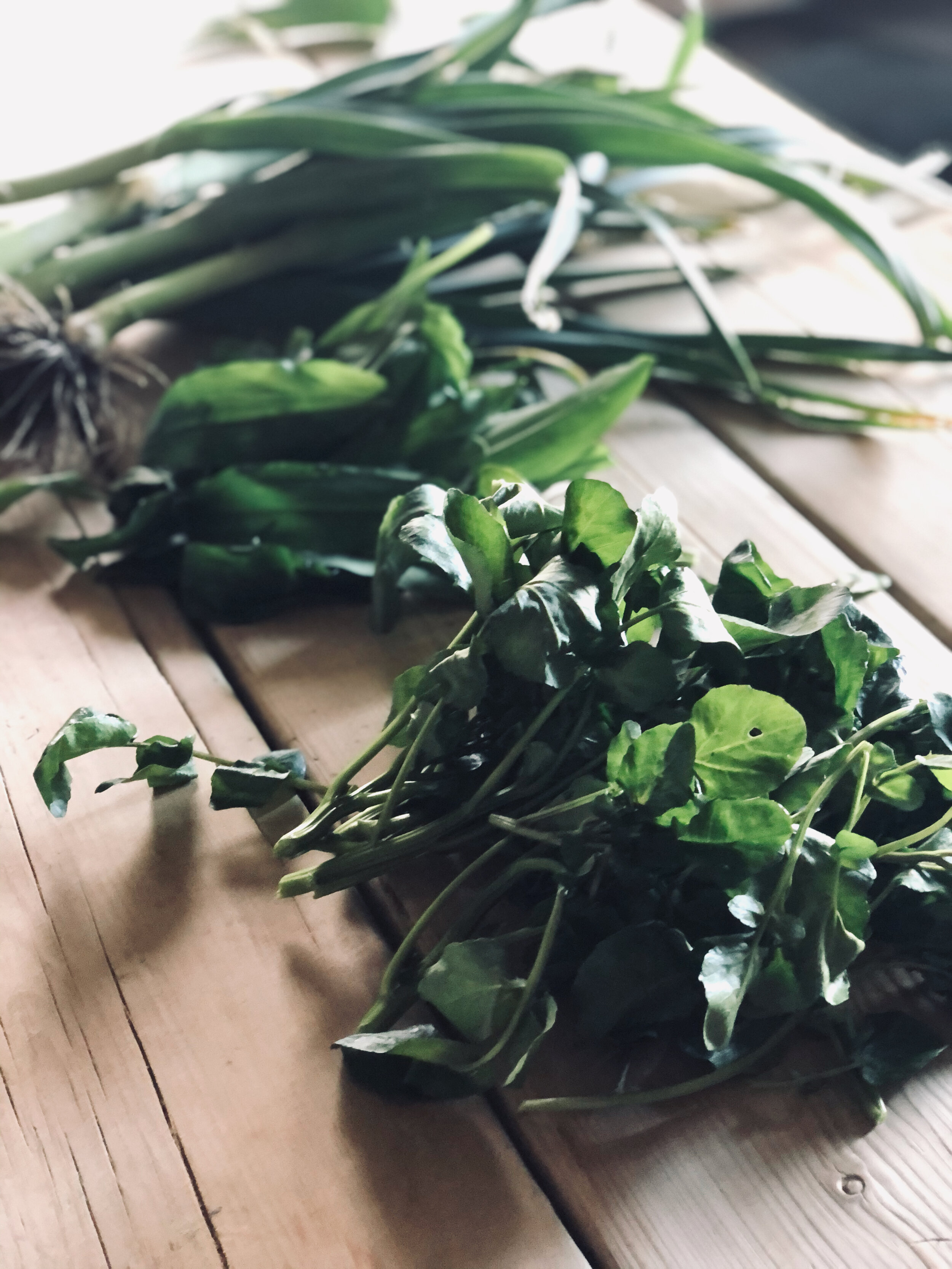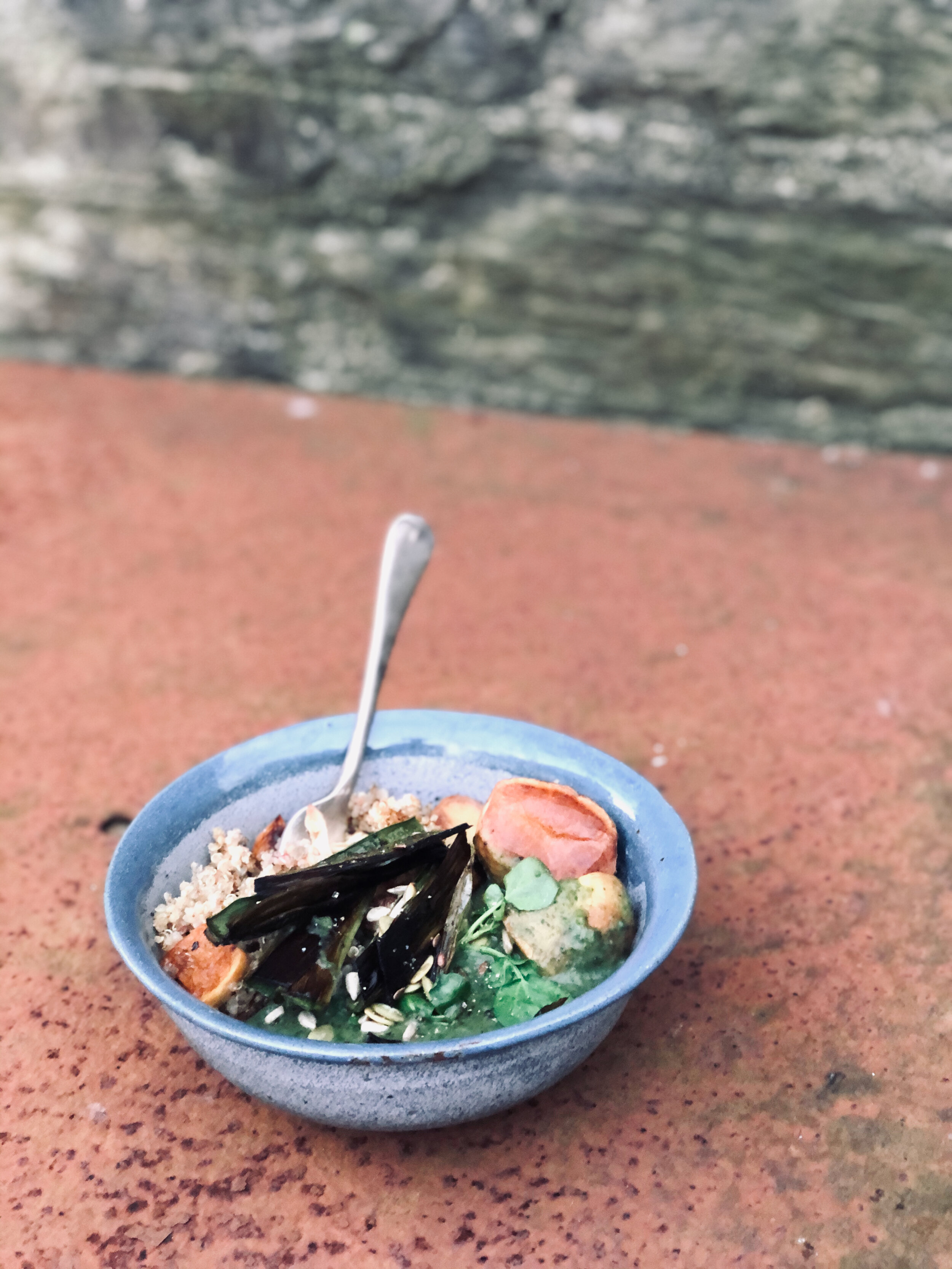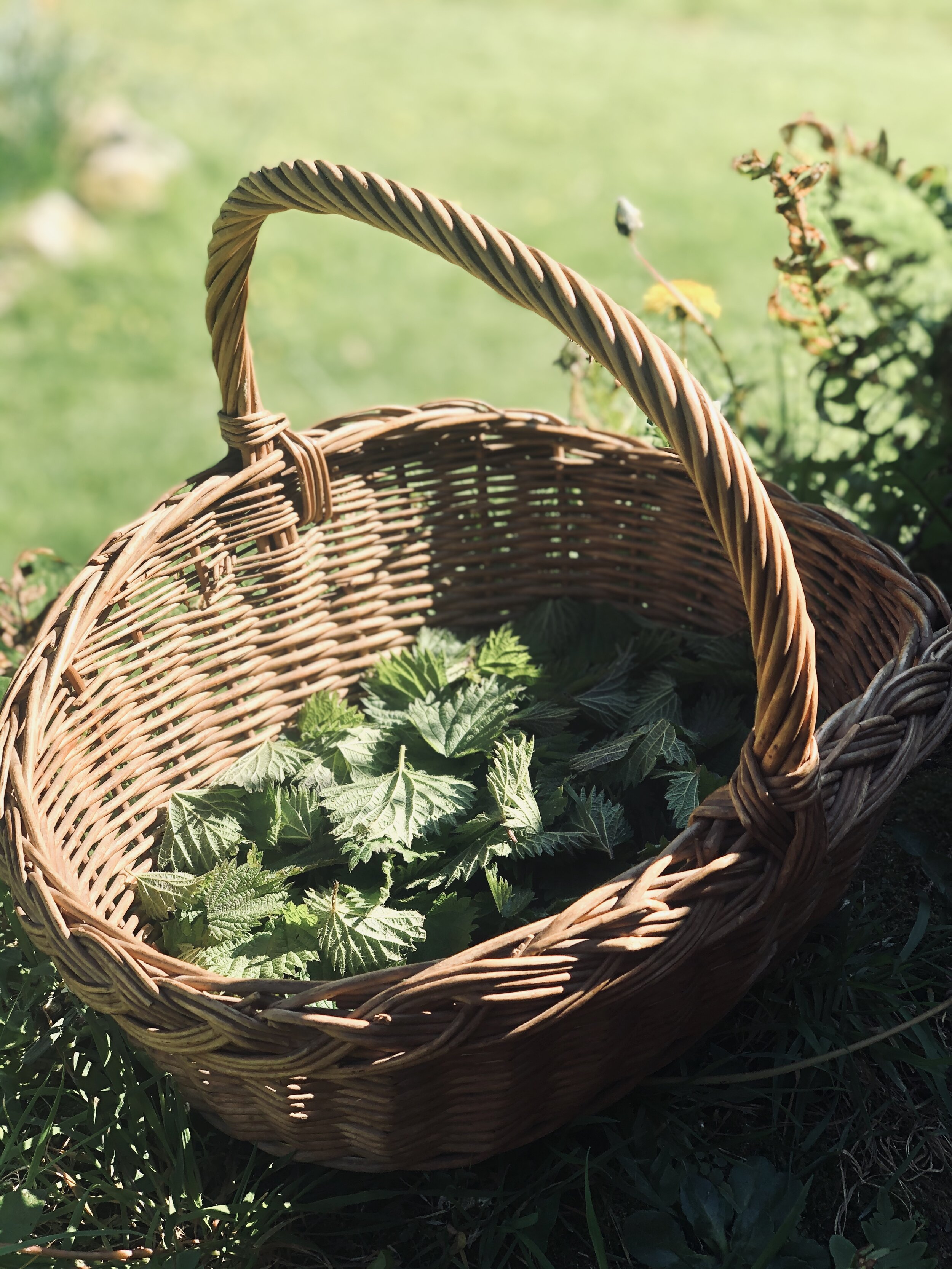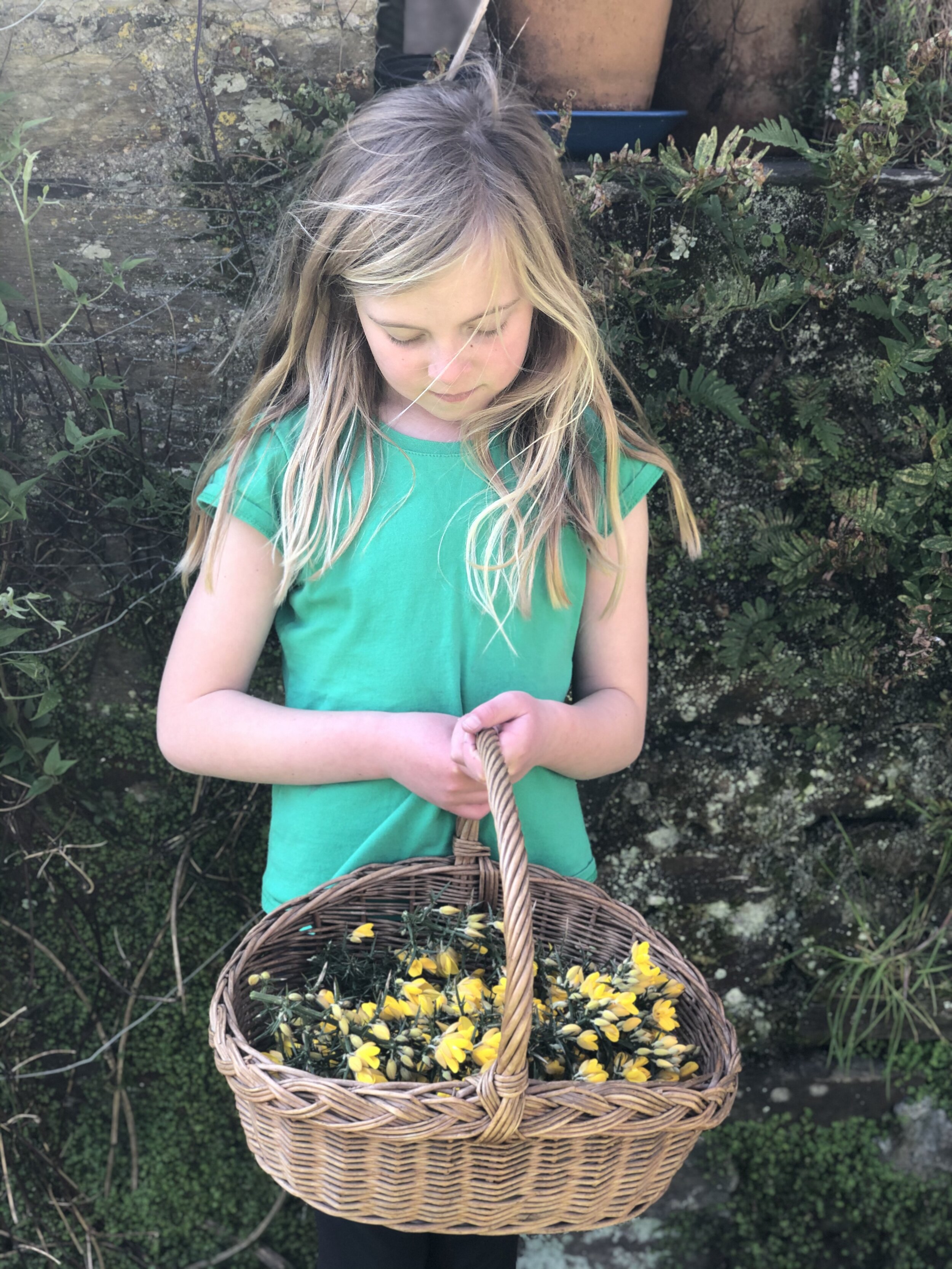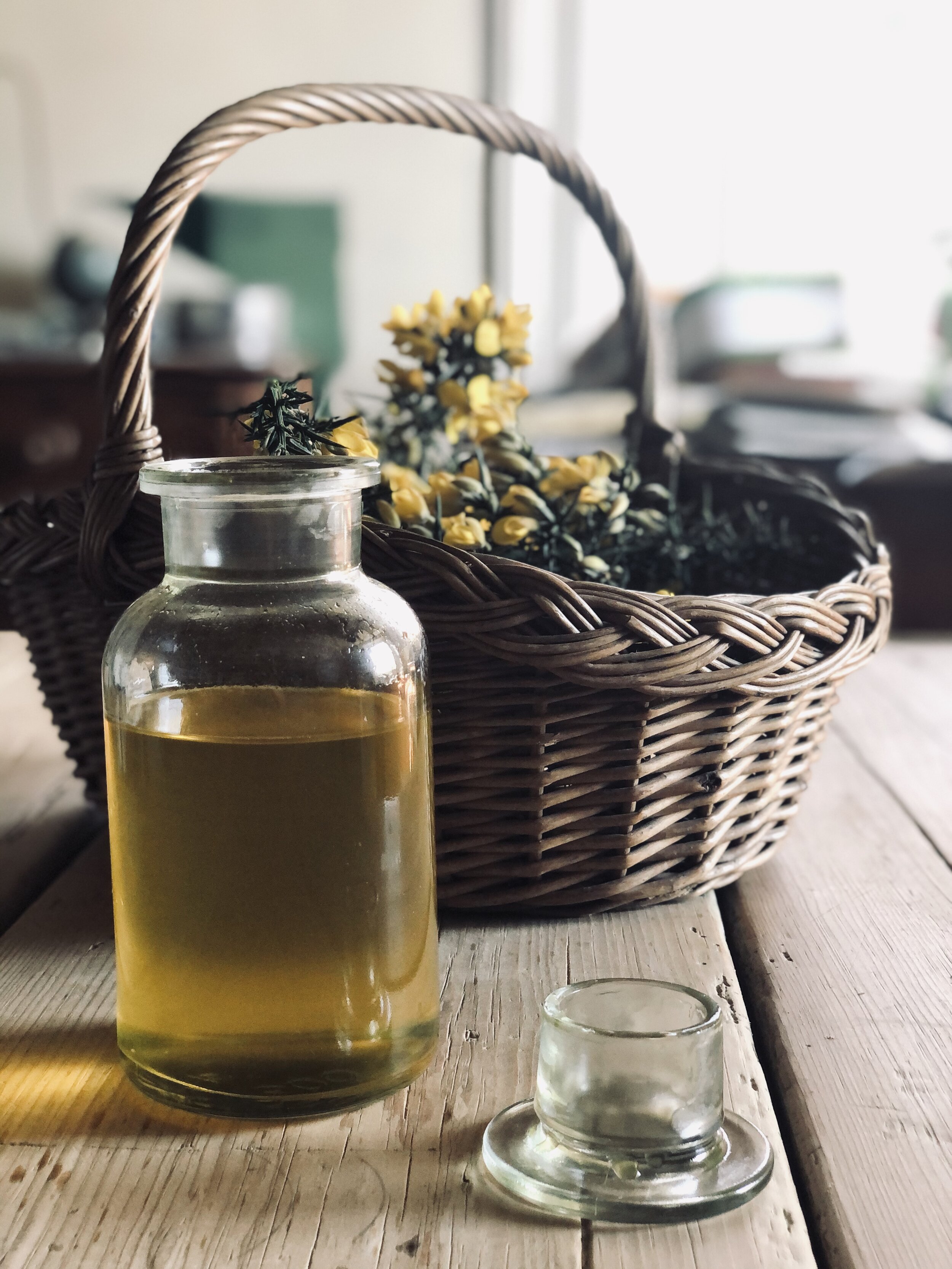I’ve struggled to know what to call this; ‘Early Spring on Toast’ seems the most simply explained, although it doesn’t speak to the ingredients! I wanted to create topped-sourdough breakfast / brunch dish that could take the place of avocado on toast - delicious, but imported. I was very excited to see our purple sprouting plants produce another batch of tender stems and wanted to incorporate them, accompanied by other ingredients that are available in the garden and hedgerows in early Spring. At this time of year (late March) it’s known to be hard to find local ingredients - there’s a promise of much to come, heralded by the arrival of clumps of wild garlic; but little has got going yet.
This recipe also embraces zero waste principles, utilising not only the very tops of the stems but leaves and some of the firmer stalks that might often be discarded; they are quickly roasted then blitzed along with the other ingredients.
I prepared this as I shared brunch with Jeffrey Robinson of The New Yard Restaurant in West Cornwall. You can listen to our conversation on sustainable cooking within the restaurant industry via Episode 13 of my podcast, Breakfast & Beyond.
Enjoy!
Recipe: Smashed Purple Sprouting & Poached Egg on Sourdough
Serves 4
Ingredients:
150g purple sprouting broccoli - use the heads, stems and leaves
50g hazlenuts
Small handful wild garlic leaves
1 large lemon
1 tsp rose harissa
Couple of splashes cider vinegar
Small handful parsley (or other garden herb)
2 tbsp olive oil, plus a little more for drizzling
2 tbsp ricotta
Salt & Pepper
4 slices sourdough (or alternative bread)
4 eggs (at room temperature)
To garnish: hedgerow leaves and flowers of your choice eg wild garlic flowers and leaves, sorrel
Method:
Preheat oven to 180C.
Roughly chop the purple sprouting broccoli (heads, stems and leaves) into bite-size pieces, spread out on a large baking tray. Drizzle with olive oil, salt and pepper. Place in the oven for 5 minutes then remove (when vibrant green colour), turn off the oven and set aside to cool.
Roughly chop the hazelnuts, toast for a few minutes in a small, dry frying pan, shaking regularly, until just starting to turn golden. Remove from heat and set aside to cool.
Once cool, put most of the hazelnuts into a food processor, setting a few aside for garnish. Blitz those in the food processor for about one minute, until resembling breadcrumbs. Add the cooled broccoli, blitz again.
Grate the lemon rind into the food processor, then add the lemon juice. Set aside a few wild garlic leaves for garnishing, roughly tear the rest and add to the food processor. Add the harissa, the small handful of parsley, 2 tbsp olive oil and a dash of vinegar. Blitz again until well combined. Add the ricotta, blitz again and season with salt and pepper. You can adjust the consistency if you would like to with olive oil and/or lemon juice. Set aside.
Bring a pan of water to simmer, add a dash of vinegar. Keeping the pan at a simmer, crack the eggs in one at a time. Keep the pan simmering, you will likely need to turn up the heat slightly once the eggs are in. Set your timer for 4 minutes. Prepare a plate with kitchen roll on top, that the eggs will be placed on when they come out of the water.
While the eggs are poaching, toast the sourdough slices. When toasted, lay on plates and drizzle with olive oil. Spoon the smashed broccoli onto the toast, so there’s a thick layer on each slice.
When the eggs are done, remove with a slotted spoon onto the kitchen roll. Lightly lay another piece of kitchen roll on top to remove excess water. Then place an egg on top of each piece of toast.
Garnish each plate with the remaining wild garlic leaves, toasted hazelnuts plus any other seasonal flowers or leaves such as sorrel or wild garlic flowers. Crack pepper on top and serve.






